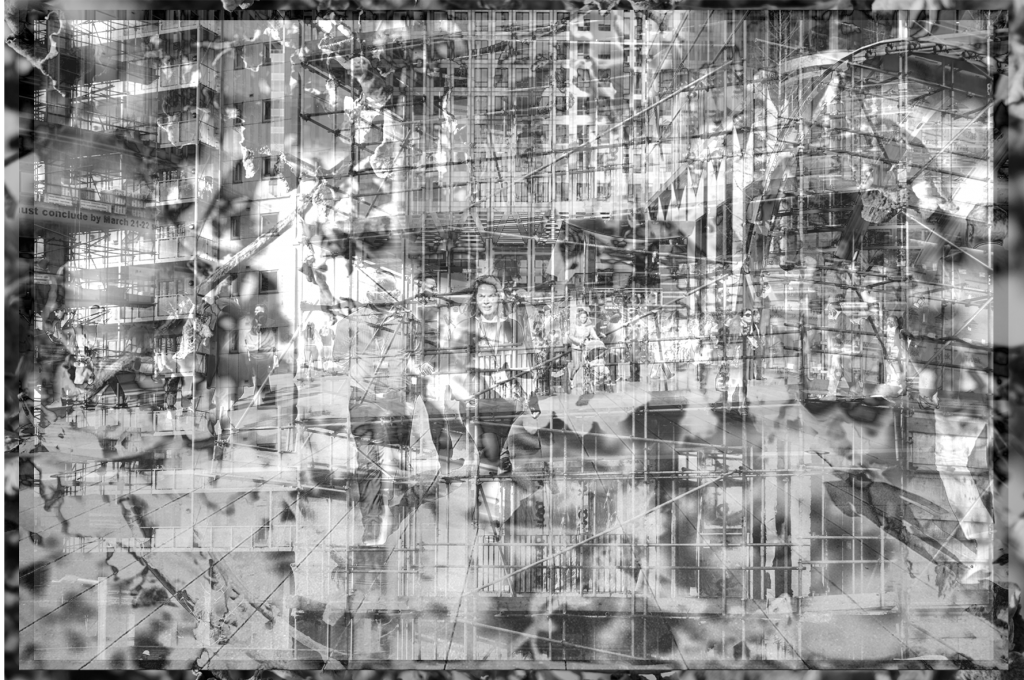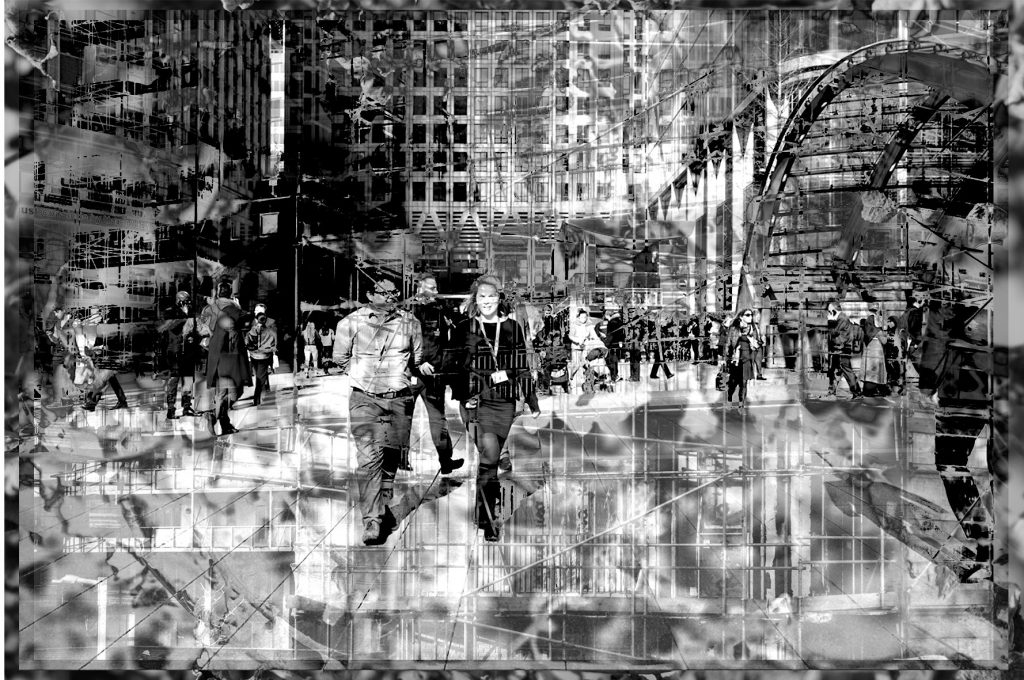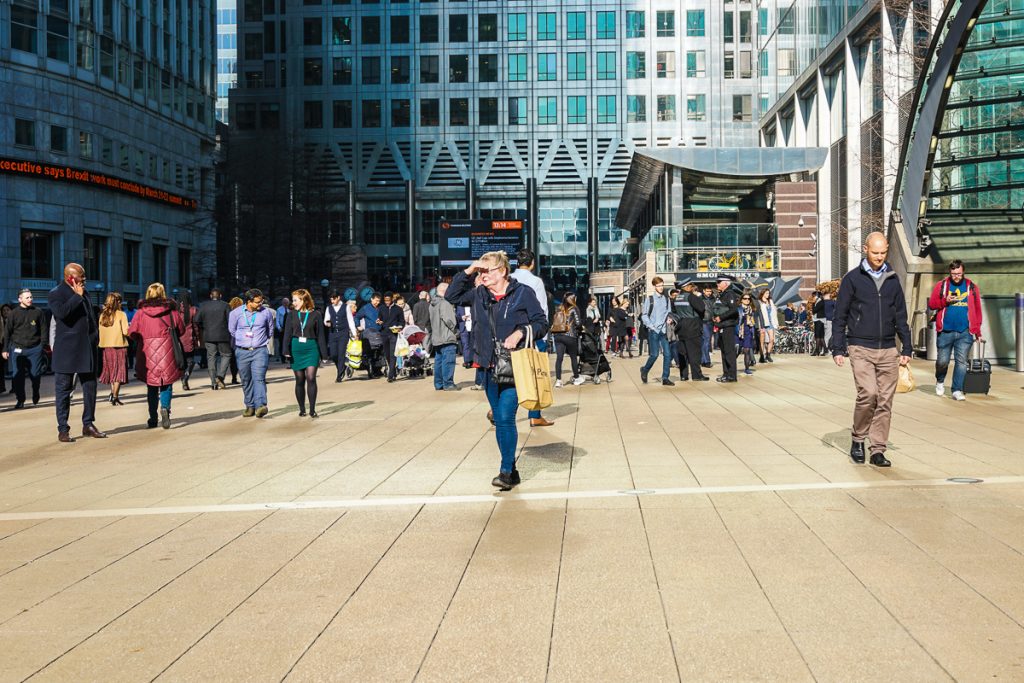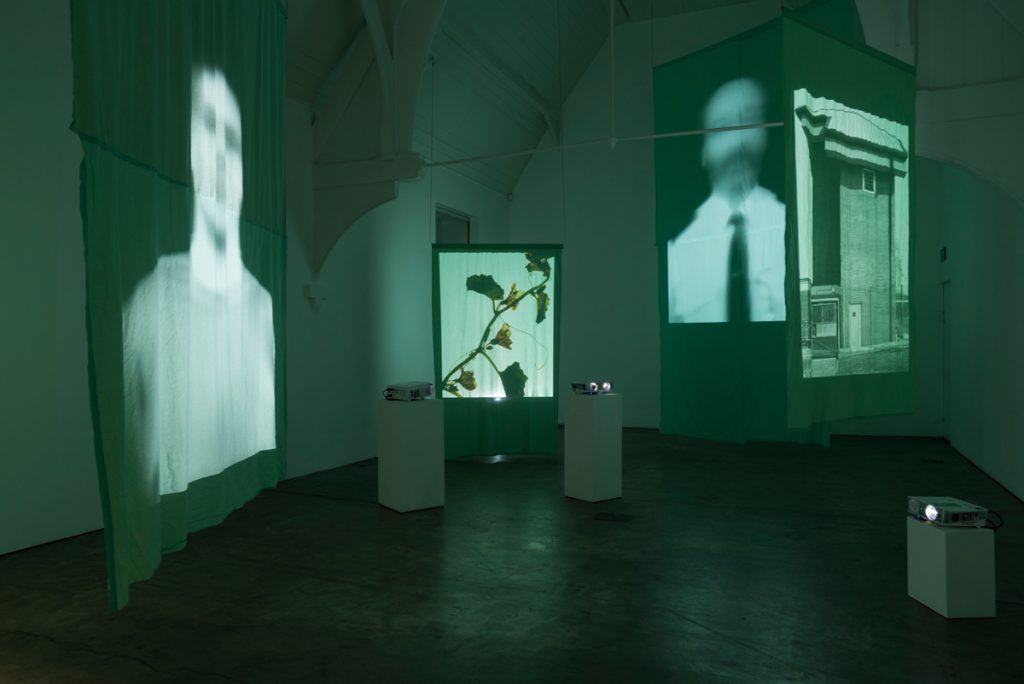In my presentation for Positions and Practice, I expressed unease about street photography, both in relation to its mode of operation (the prowling, opportunistic, and at times invasive, hunter of images) and the forms of images produced (for instance, those which appear to denigrate or exploit the subject). Consequently, I have moved towards more collaborative forms of image making, but have remained pretty much on the hunter side of the hunter/farmer metaphor invoked earlier in the module. Over the past two weeks, however, in the development of the ‘art’ side of my photographic practice, I have explored constructed images, in particular through a process of multi-channel combining and mixing of images. The intent is to bring together, in a single frame, invocations of the past, present and future of a particular place, and to position human subjects in this hybrid re-imagined space.

The image above combines a photograph of people in a public place, mixed with an image of construction in the area (invoking the future) and a macro photograph of plants found in the mostly heavily developed and concreted space (invoking the past). In my own ‘looking’ I am attempting to identify resources that can be used in the construction of an image that explores the interaction of the past, present and an immanent future, and the relationship within this between the human, natural and built environment. In this way, the visual constitutes material in the production of an image through juxtaposition. Changes in the manner in which channels are mixed can have a marked effect of emphasis within the image, as can been seen in this alternative mix below.

This opens up the possibility of a short moving image that flips continuously from one to the other. It also influences how I shoot and edit, with both the structure and content being influenced by the use of the image in creating the multi-channel work. If I was selecting a single, standalone image from this particular setting, it would, I think, have been the image below, but this wouldn’t work in the creating the mix above (note: forthcoming post on the process and how this relates to intent and theory).

Edmund Clark, in his exhibition ‘In Place of Hate‘, arising from a 3 year study of HMP Grendon (Europe’s only wholly therapeutic prison, specialising in the rehabilitation of violent and sexually violent offenders), included pressed flowers found on the site, as a way of both highlighting the contrast (and resonances) between the harshness of human incarceration and the fragile (but resilient in its insistence to grow in the environment) natural world. My images seek a similar juxtaposition and play between contrasting elements, but within a single image. The process of multichannel mixing (described here), however, both renders each element less distinct, and attempts to convey a sense of the interaction between elements. In this work, I am neither simply hunter nor farmer (though the process entails elements of both), but rather designer, architect, collector, curator, alchemist, experimenter and more. The approach opens up the prospect of both the creation of new images for the purposes of mixing, and the incorporation of archival material, computer generated images and found images.

The resulting images can be considered to be fictions of a sort, pulling together ‘untethered’ materials from elsewhere, and combining different ways of looking (and, therefore, different forms of gaze). The intent of the fiction, however, it to explore relationships in time and space, and thus the approach resonates with the idea of fiction as methods (see my discussion of the work of Francois Laruelle and the arts here). I am producing the work for an audience that wishes to explore ways in which the visual arts can be deployed, in conjunction with other approaches, to explore complex human and environmental issues. How the reader interprets the image depends very much on context, and the motivations and interest of the reader. As with all forms of image making, there is a need also to work to actively create an audience, and to seek appropriate outlets and contexts for the work. The images are clearly challenging to read (given the detail, the prints will need to be large), and the process in the early stages of development.
References
Edmund Clark, 2015-17, In Place of Hate. https://www.edmundclark.com/works/in-place-of-hate/#1 [accessed 04.03.19].
